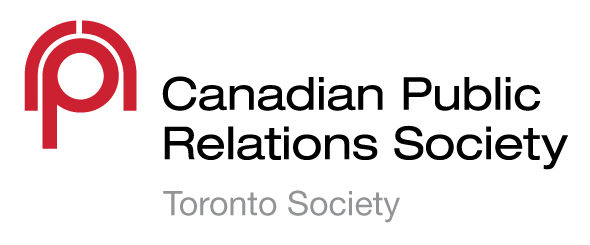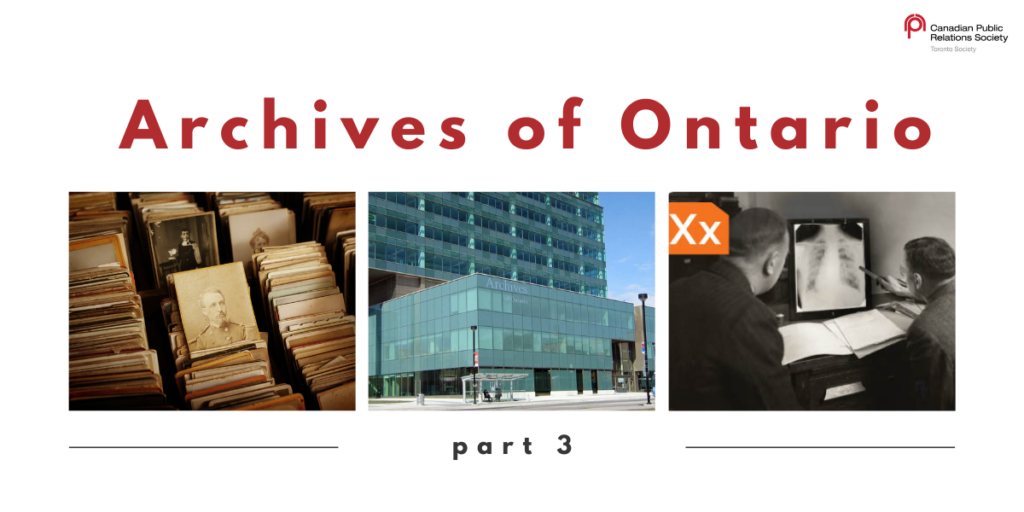Written by: Carolina Salinas, public relations and corporate communications graduate, Professional Development Inclusion & Equity Co-Chair, CPRS Toronto.
Not entirely certain about the role of public relations within archives? We bring you part 3 of our series “The Role of Public Relations within GLAMs during the COVID-19 lockdown.” This time, we interviewed the Archives of Ontario PR team!
Archives of Ontario
Did you know that the Archives of Ontario is the largest provincial archive in Canada? These archives are also a primary source of information outlining the history of Ontario and its population. For more than 100 years, this institution has been collecting, preserving, and making publicly available the province’s longstanding heritage.
This memory institution has both physical and digital spaces for education, research and learning. It offers innovative digital practices and also provides public access to unique and multi-faceted materials dating back to the 16th century. These include hand-written letters, books, maps, architectural drawings, photographs, artwork, films, sound recordings and electronic documents, among others.
PR’s role within the Archives of Ontario is crucial toward user engagement and story preservation. In an interview with Archives of Ontario’s Senior Manager of Strategic Stakeholder Development, Garima Sharma, and Manager of Outreach and Promotion, Mark Epp, both mentioned that their teams cover multiple functions.
“From a public perspective, we are always looking for ways to engage with our audiences, provide them free access to Archives resources, and create awareness through promotion of this Ontario resource that is available to all across the province and globally. One thing that we have noticed is that while people typically understand how libraries function, not everybody really understands how archives work,” said Sharma.
She added that the Archives of Ontario’s PR team helps people to understand how they can access their provincial records and documentary heritage.
According to Sharma, the Archives recognizes value of engaging with GLAM stakeholders. This means that there is a lot of collaboration, both inside and outside the government, to create synergistic approaches. For instance, there has been ongoing collaboration with the Ministry of Heritage, Sport, Tourism and Culture Industries, the City of Toronto, and the Royal Ontario Museum (ROM).
Mark Epp added that the Archives launched a GLAM Wiki page with five collections uploaded to it since last June. The page has received positive engagement in terms of views and responses. Some stakeholders have also reached out to connect on the project as a result
“Collaboration is the key to delivering public services. We try to do that not just when we talk about public outreach or communication. We have a strategy that requires working collaboratively with local and other archives, with other provinces and private records, private citizens and organizations. Our objectives have always been to make records accessible and readily available to people,” said Sharma. “For many years, we have been working in the background to deliver more digital services, despite the Archives collection being predominantly paper or analogue based,” said Sharma.
Additionally, the Outreach and Promotion team, led by Mark Epp, is always looking for ways to generate engagement and offer people different stories in its on-site and online exhibitions.
The most recent online exhibit is about the James Bay Treaty. Launched during the pandemic in August 2020 in collaboration with Mushkegowuk Council and Queen’s University Archives, the exhibit examines the historical significance of this treaty, its different interpretations, its impact on Indigenous communities and the treaty’s relevance today.
Since the Archives closed its in-person services, the Archives has focused on creatively developing online initiatives to engage with audiences. For educators and students, the Archives designed and developed flashcards to support learning at home or in the classroom. For genealogists, one of the Archives primary users, staff participated and delivered webinars as part of Ontario Ancestors monthly webinar series. These webinars attracted as many as 500 participants in one online event – much more than previous in-person talks. As well, the online webinars attracted wider participation from across Ontario and beyond.
“I think our experience during the pandemic has allowed us to explore different virtual options: flashcards, puzzles, quizzes, trivia nights, webinars. Even when we reopen, it will be important to continue and build on delivering these virtual options,” said Epp. “It has been good for the team to learn new skills and to adapt a more digital direction.”
The Archives of Ontario has also had success in the virtual world by attracting, connecting and engaging with its audiences on its website and various social media platforms.
Engaging with the public in the virtual world will continue to be the focus of the Archives of Ontario in 2021 as it works towards offering more virtual services and adopting new technologies.

